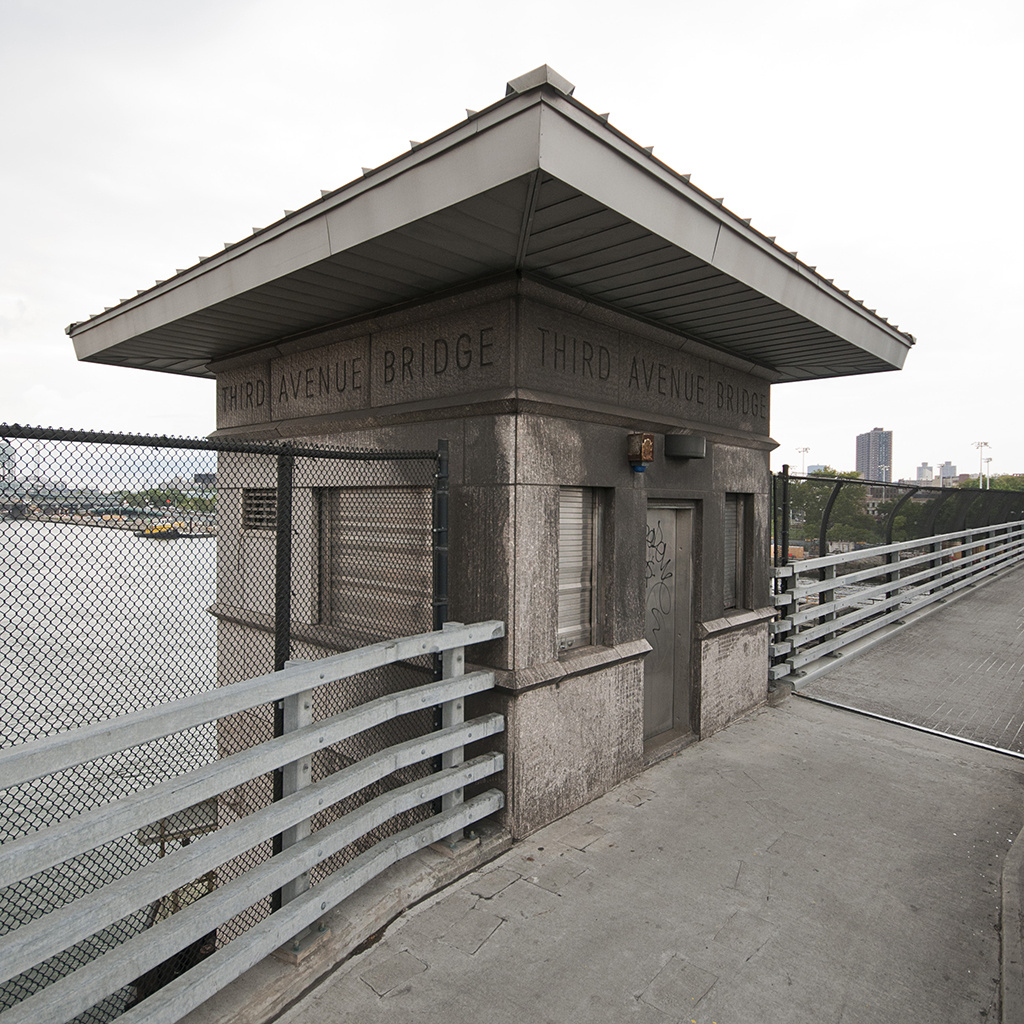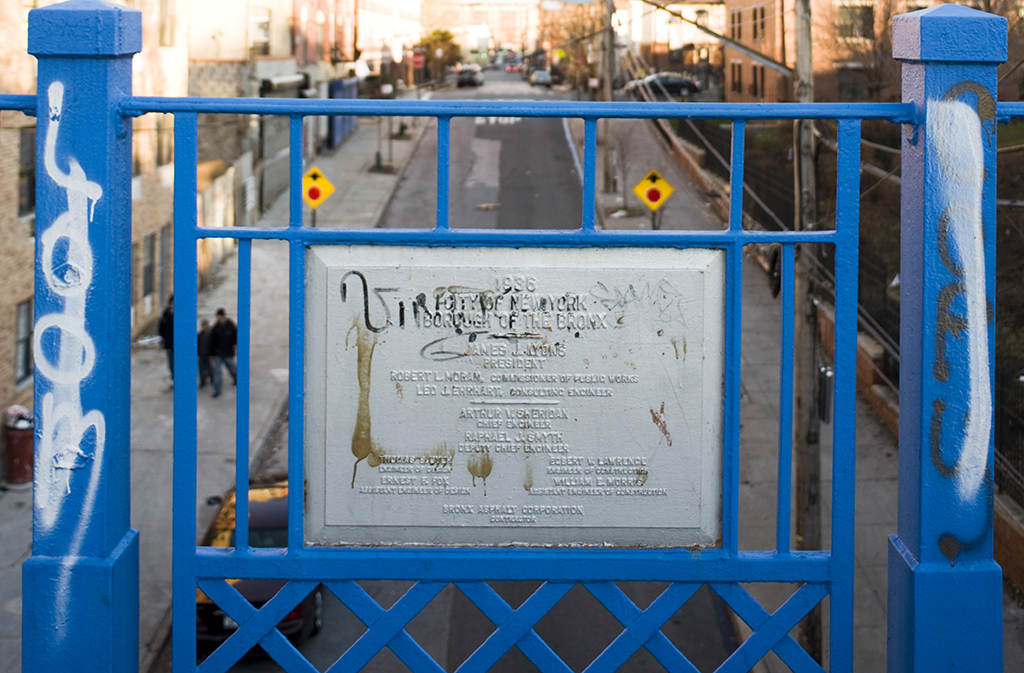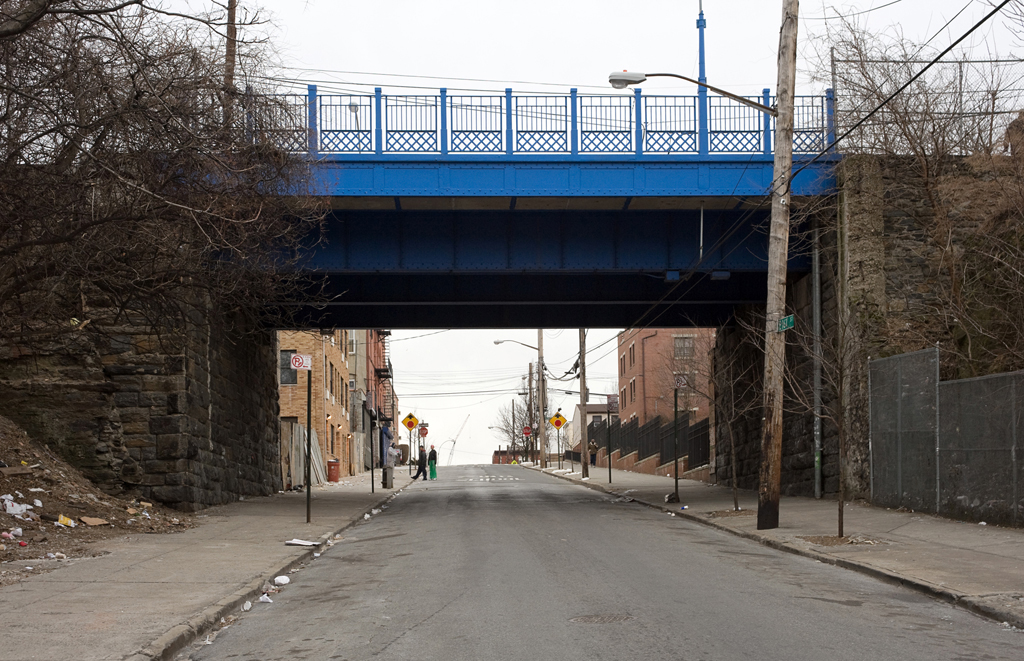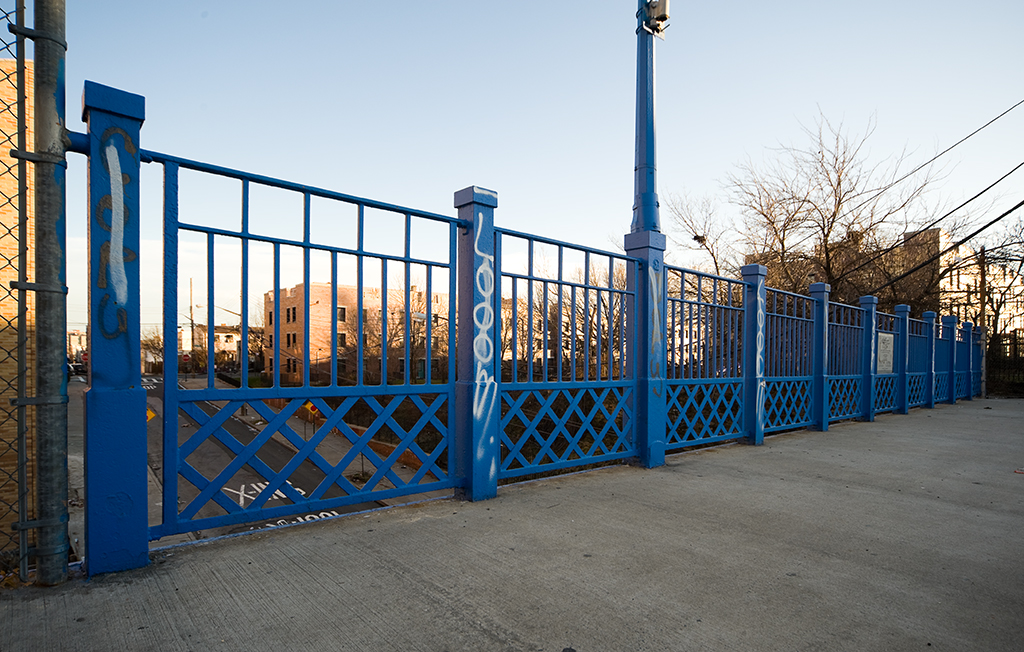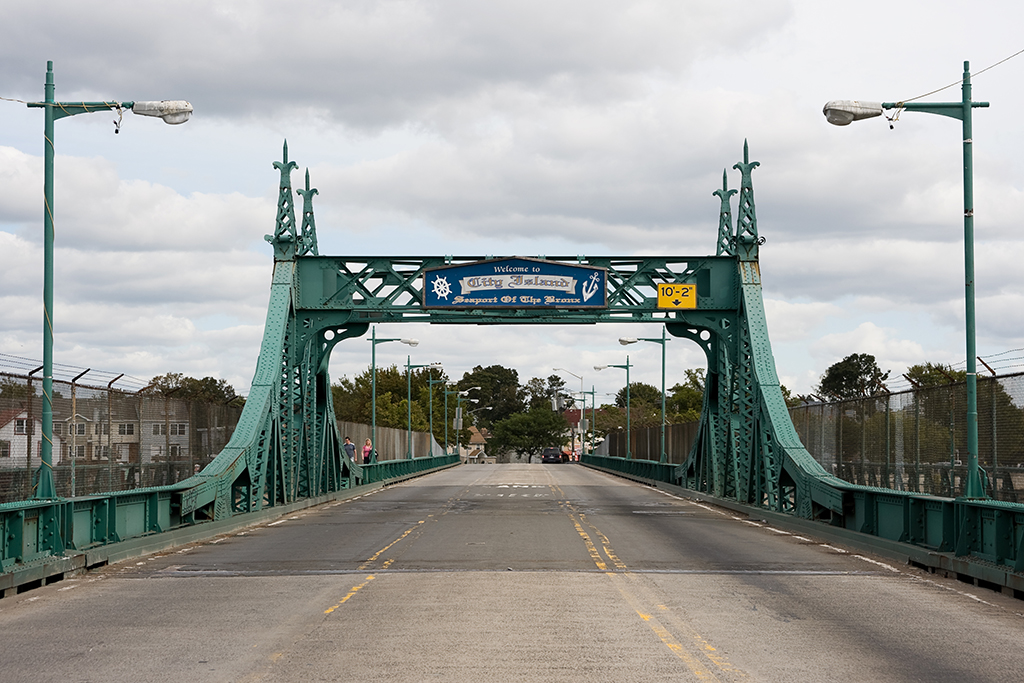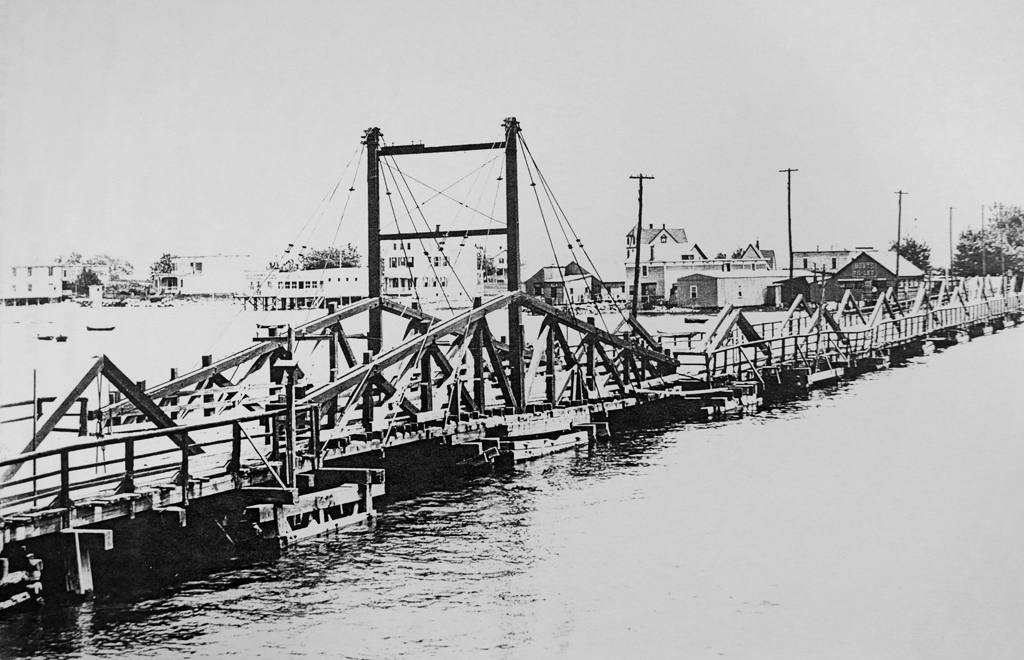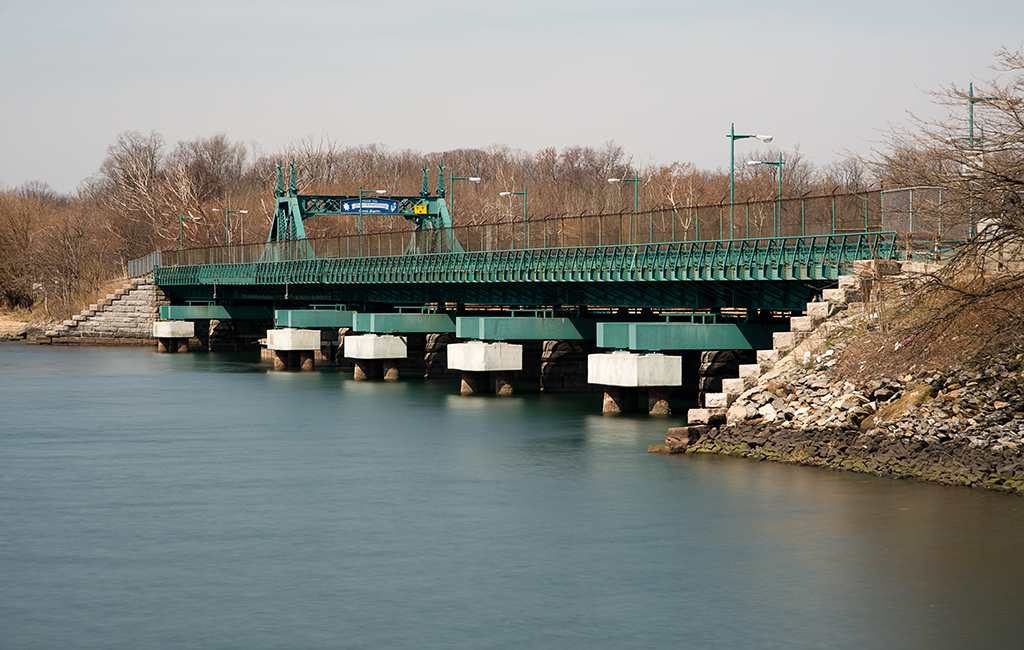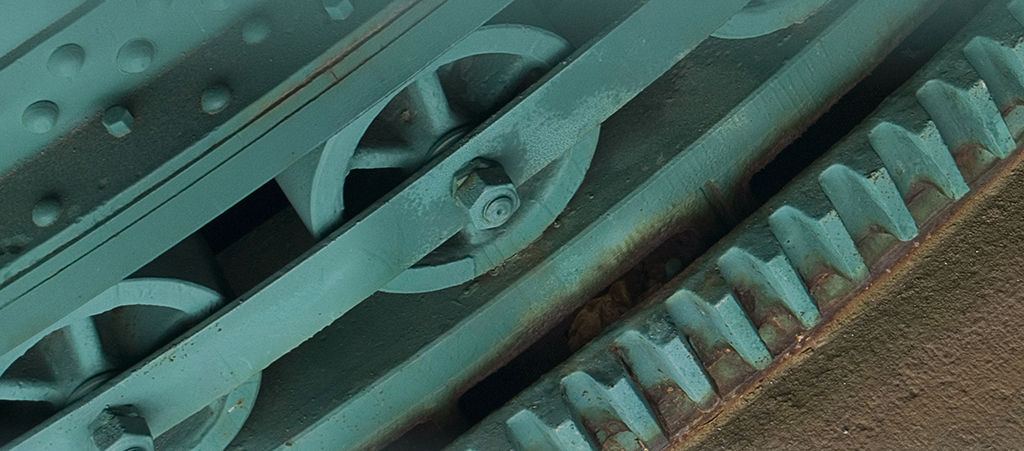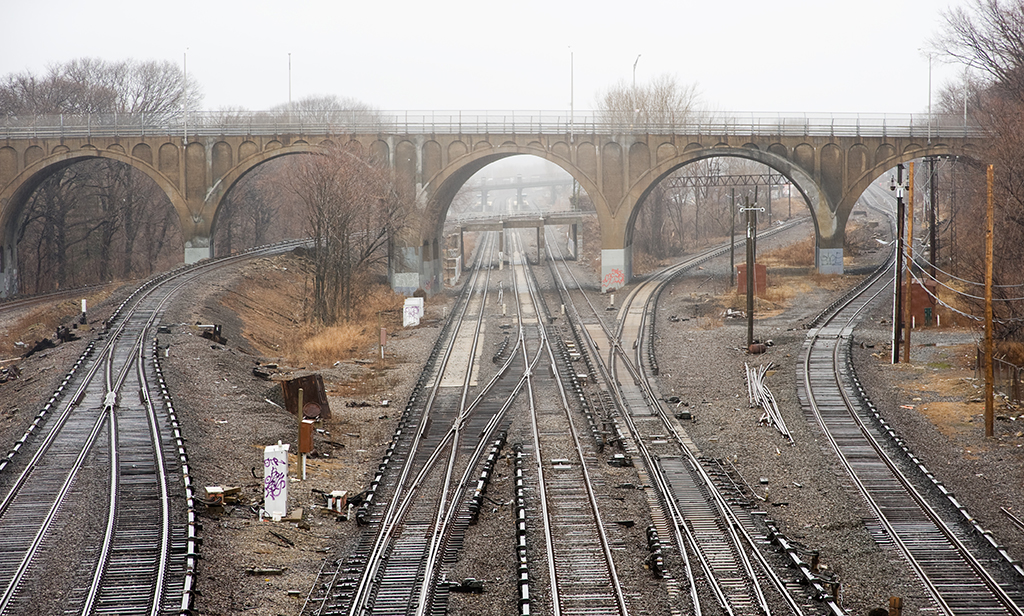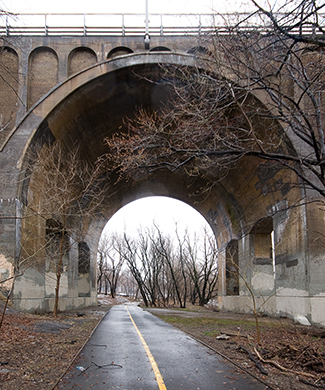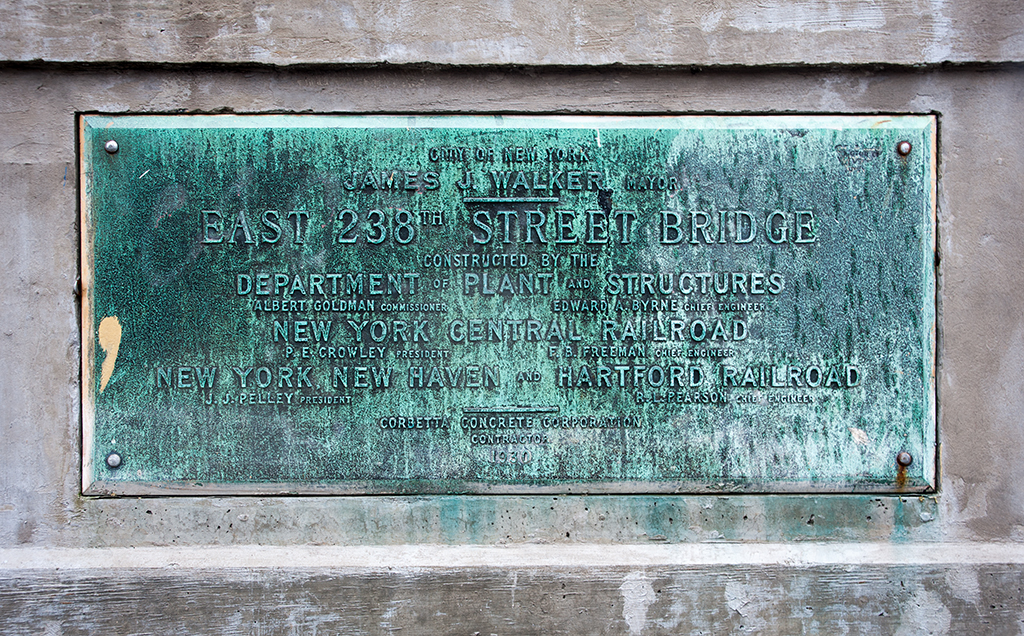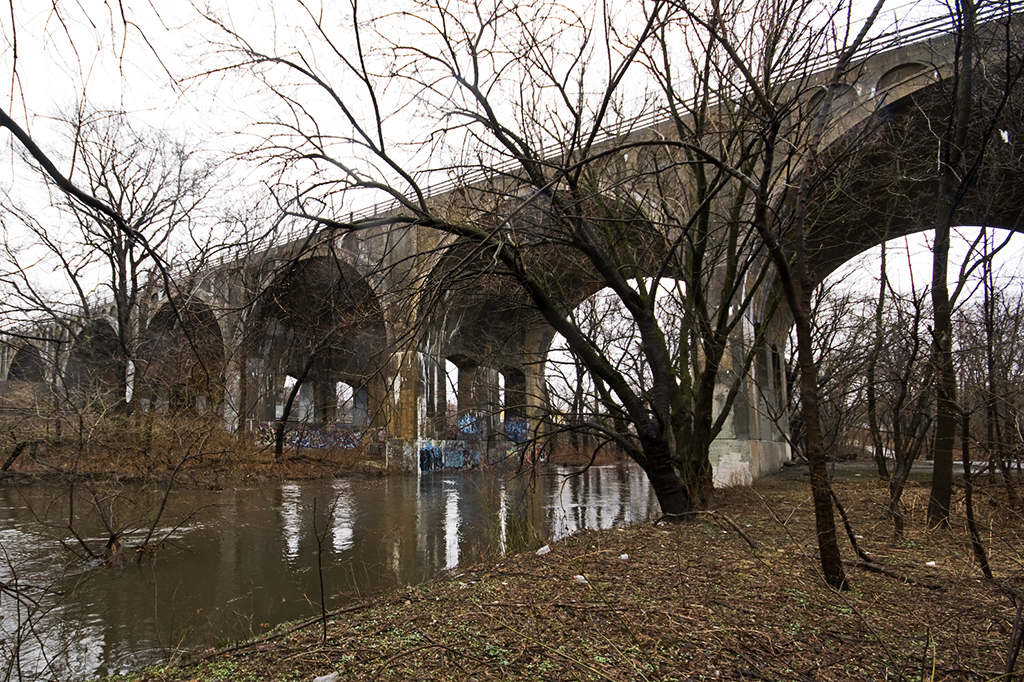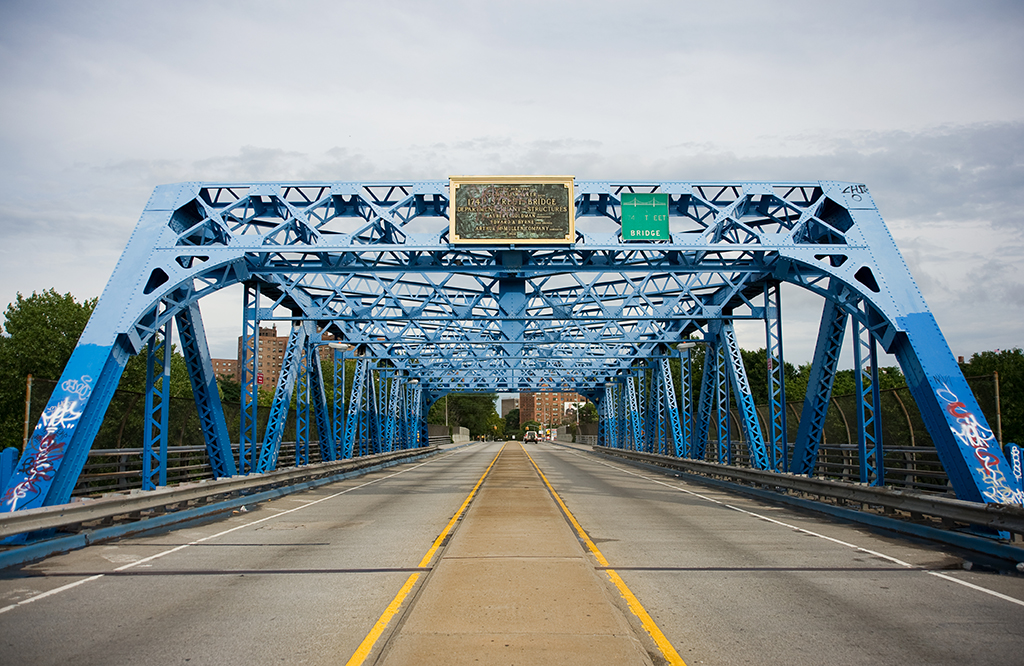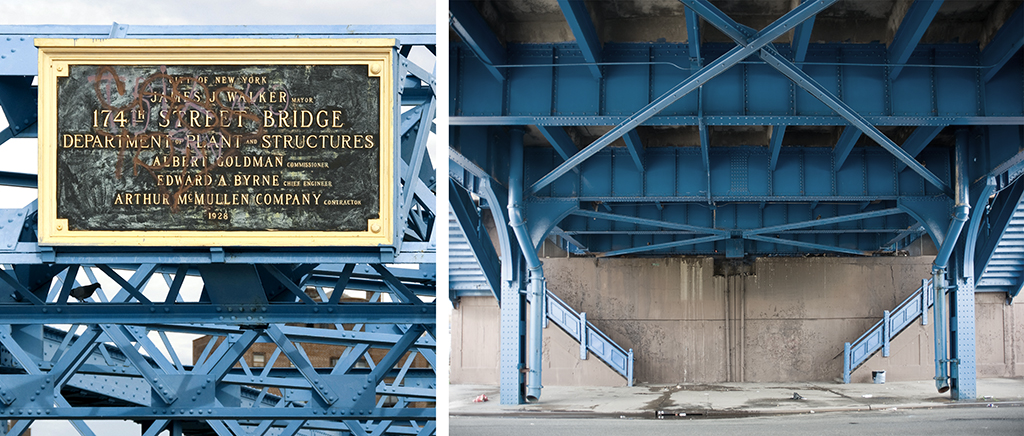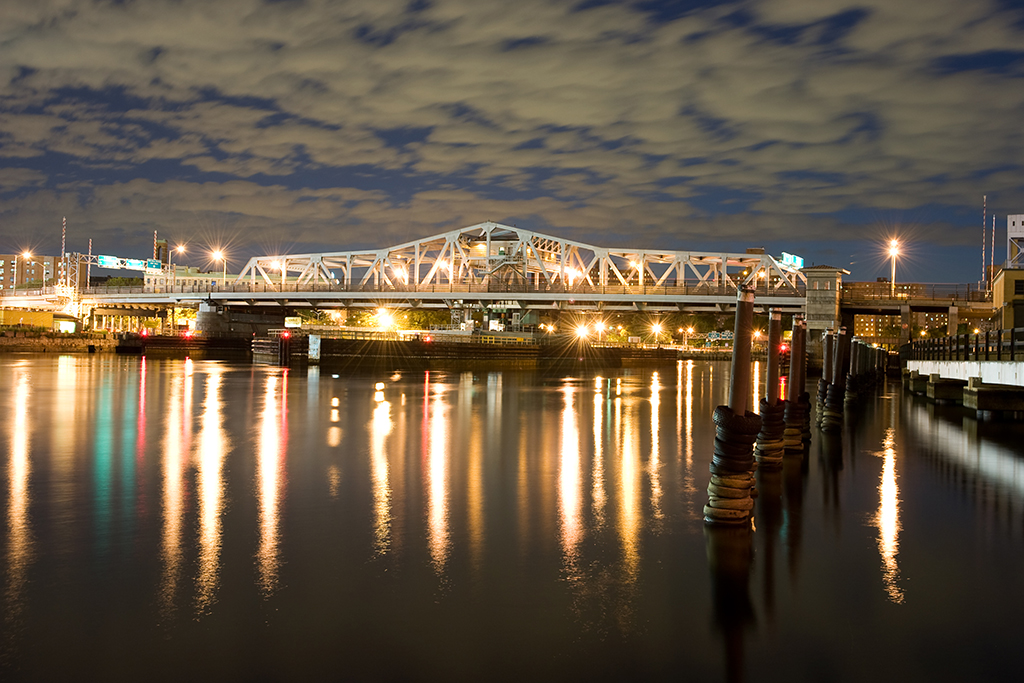
Crosses: Harlem River
Connects: Third Avenue between Mott Haven, the Bronx and Harlem, NY [satellite map]
Carries: 5 Manahattan-bound vehicular lanes, 2 pedestrian sidewalks
Design: swing bridge
Date opened: 2004
Postcard view: “Harlem River, N.Y. City”
The Third Avenue Bridge is a swing bridge over the Harlem River, connecting Third Avenue in Manhattan with Third Avenue in the Bronx. It is the fourth bridge to stand at that location.
In 1774, Lewis Morris received permission to build a bridge to connect a proposed road through Harlem with a road leading to the Morris family’s estate, Morrisania, and the village of Eastchester (both are now neighborhoods located in the Bronx). Though a ferry had once operated between Manhattan and the Bronx just east of the proposed site of the crossing for a few years in the late 1600s, the only way for people to travel between the two at the time of Morris’ proposal was by either King’s Bridge or Farmer’s Bridge, both of which were located at the far northern tip of Manhattan. Morris’ bridge would cut the traveling distance between his estate and the southern end of Manhattan, the core of the city at the time, by nearly 12 miles.
Coles Bridge
Nothing was done about the bridge, however, until the end of March 1790, when a refined charter was given to Morris to build a drawbridge at least 12 feet wide to accommodate river traffic. Morris was also given permission to charge tolls on the bridge for a period of 60 years, after which ownership of the bridge would pass on to the state. Such arrangements were common at the time as an enticement for private entities and individuals to invest in public infrastructure.
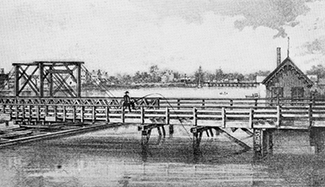
Also common at the time were delays concerning large projects such as this. Nothing concerning the bridge is mentioned in the city’s legislative archives until March 1795, when Morris sought permission to transfer his charter to a business partner and family friend named John B. Coles. The new charter was approved with a modification allowing Coles to build the bridge on top of a dam in order to a establish a water-powered mill at the site. In early 1797 the Coles Bridge, as it came to be known, a simple wooden structure with a turntable draw span, was opened, though Coles apparently never got around to building a dam underneath it. The route over the bridge, consisting of a newly constructed Middle Road (now roughly Eighth Avenue and Central Park West) in Manhattan and what came to be known as Coles Road (now Third Avenue and Boston Post Road in the Bronx) quickly became more popular than the King’s Bridge or Farmer’s Bridge route, in spite of the fact that Coles had inherited and taken advantage of Morris’ right to charge tolls while the uptown crossings were both free to use.
The Harlem Bridge
On April 1, 1858, in accordance with the original charter’s stipulation and the State Legislature’s Chapter 774 of the Laws of 1857, ownership of Coles Bridge passed from the Coles family to the state government. By that time, the bridge had fallen into such a bad state of repair that nothing could be done to save it, according to the Commissioners of Harlem Bridge, a group consisting of New York and Westchester officials convened specially to oversee the takeover of the bridge by the state. In June 1860, the Commissioners made an official inspection of the bridge in anticipation of a reconstruction project. They found the superstructure in an advanced state of decay and “the piers destroyed by the ravages of the worm” [1] (the worm in question, teredo navalis, is not actually a worm but a mollusk, commonly known as the shipworm or marine borer. It is still a serious problem in the city, with many millions of dollars budgeted for the reconstruction of waterfront piers, highways, and high rise foundations due to its highly efficient method of consuming submerged wooden pilings).
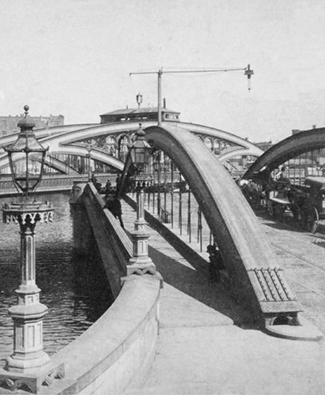
The official decision to rebuild the bridge came soon after, and work began in August 1860. Erastus W. Smith, a New York mechanical engineer with many years of experience running municipal water works and ocean liner systems was named as Chief Engineer of the project. The original plans for the bridge called for a series of simple through truss approach spans with a through truss swing span atop a turntable. Smith decided instead to build the bridge with arched tubular truss spans constructed of wrought iron, giving the bridge a gracefully curved profile in comparison to the original boxy design. The old span was kept in place as the new bridge was built just west of it. The piers for the new bridge consisted of a combination of six foot and eight foot diameter cast iron cylinders, sunk into the river bed by pneumatic force, one of the earliest instances of the use of compressed air for bridge construction in the country. The pier sinking and foundation work were completed by the New York firm of Roach & Edwards. The superstructure of the bridge was constructed by the Trenton Locomotive Machine Manufacturing Company of New Jersey. After 8 years of work, the still incomplete bridge, called the Harlem Bridge, was opened for public use on October 16, 1868. The bridge measured 526 feet long by 52 feet wide, including a 218 foot long swing span that operated under the force of water supplied by a Croton water main. Shortly after it opened, a horse car railroad was established over the bridge by the Harlem Bridge, Morrisania and Fordham Railroad Company. Horses would be used on the bridge until 1891, when they were replaced by a an electric propulsion system with power provided by overhead wires.
The Third Avenue Bridge
The Harlem Bridge did not last long, however. After several years, parts of the bridge began to fall apart. The cast iron piers began to crack and the wheels under the turntable had to be replaced multiple times after breaking into pieces. The water powered engine was found to be too sluggish to keep up with the demands of road and river traffic and had to be replaced with a steam engine. In 1882, jurisdiction over all underwater land surrounding the city passed on to the US Government, which had plans to improve the waterways of the city. in 1890, the government passed the Rivers and Harbors Act which specified, among other changes, that all bridges over the Harlem River be raised in order to provide 24 feet of clearance above high water. The Harlem Bridge only provided 5 feet of clearance over the river. Shortly after, the city’s Department of Public Works, which had jurisdiction over the bridge at the time, brought forth a bill in the state legislature asking for authorization to replace the bridge with one that would comply with the new law. The bill was approved, and authorization came in the form of Chapter 413 of the Laws of 1892.
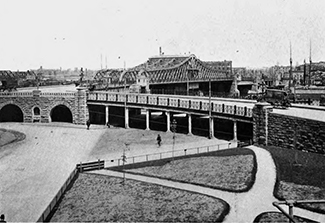
The Harlem Bridge was closed on June 20, 1894, with traffic diverted to a temporary bridge while the new Third Avenue Bridge, as it would be called, was being built. The new span was constructed as a swing bridge, with a swing span operating under steam power. The span was made with steel provided by the Phoenix Iron Works Company of Phoenixville, Pennsylvania. The span was 300 feet long and was composed of a large through truss structure with curved upper chords terminating at a sharp apex. It was designed by Thomas C. Clarke, the consulting engineer assigned to the project by the Department of Public Works. It was opened on August 1, 1898 with the blowing of its warning whistle, which was soon joined in by the blowing of whistles from nearby boats, trains and factories. It was the largest and heaviest bridge of its type in the world at the time. The bridge had room for two walkways and a roadway containing two sets of trolley tracks laid down by the Union Railway Company, the successor to the Harlem Bridge, Fordham and Morrisania Railway Company during the construction of the bridge. The tracks would remain in place until 1953 when the Third Avenue Elevated train line was demolished. The tracks were then converted into automobile lanes.
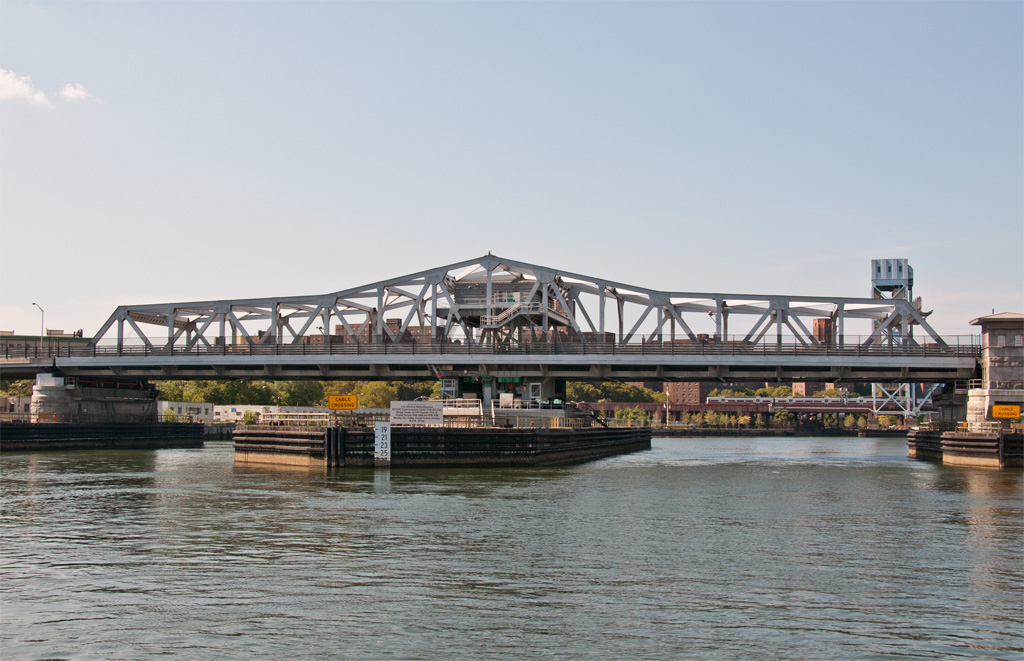
Replacement
The Third Avenue Bridge served the city well until the night of November 7, 1999, when a two alarm fire broke out on the wooden fender surrounding the swing span, closing the bridge for several days. in 2001, the city Department of Transportation, which now has jurisdiction over the bridge, began a $119 million reconstruction of the Third Avenue Bridge as part of a nearly $1 billion program to rehabilitate or replace all of the movable Harlem River Bridges. The new bridge, a swing span like all of its ancestors, was designed to visually mimic as closely as possible the span it replaced, albeit with more modern construction techniques and materials. It carries two sidewalks and five lanes of Manhattan-bound traffic. It opened in 2004.
